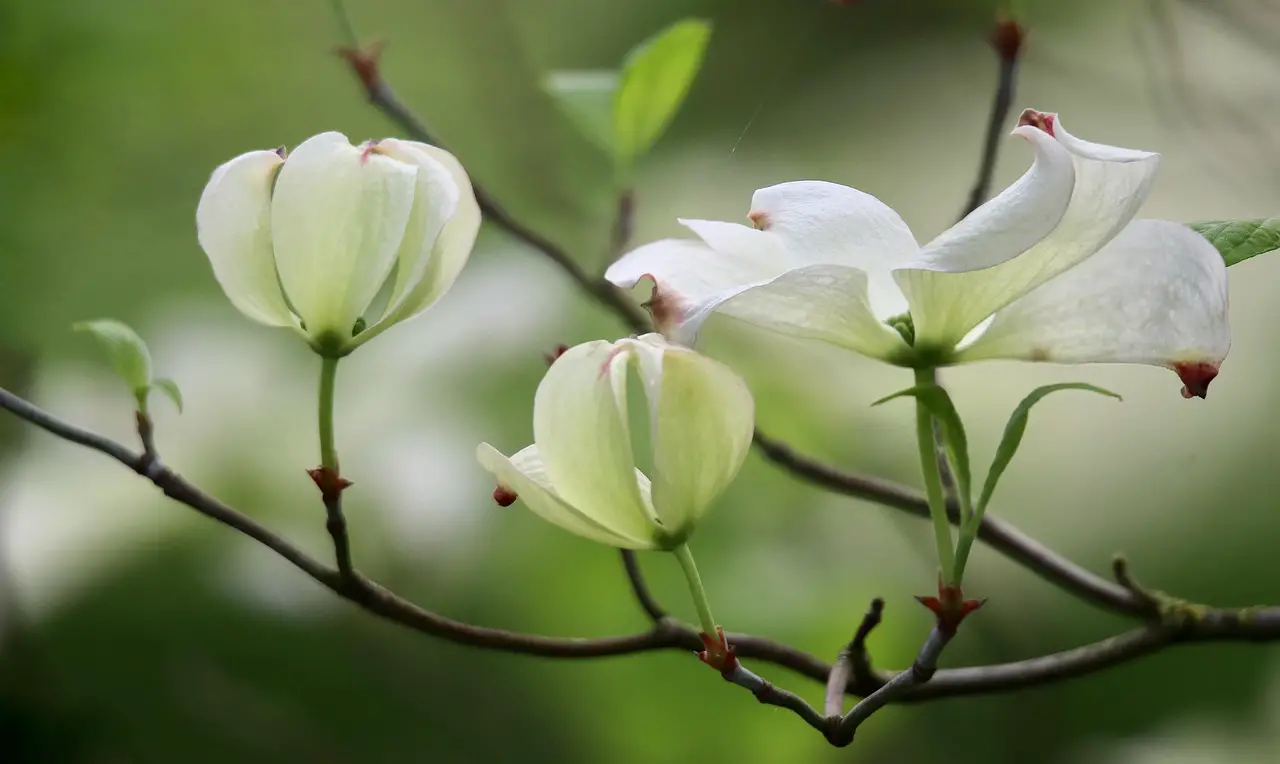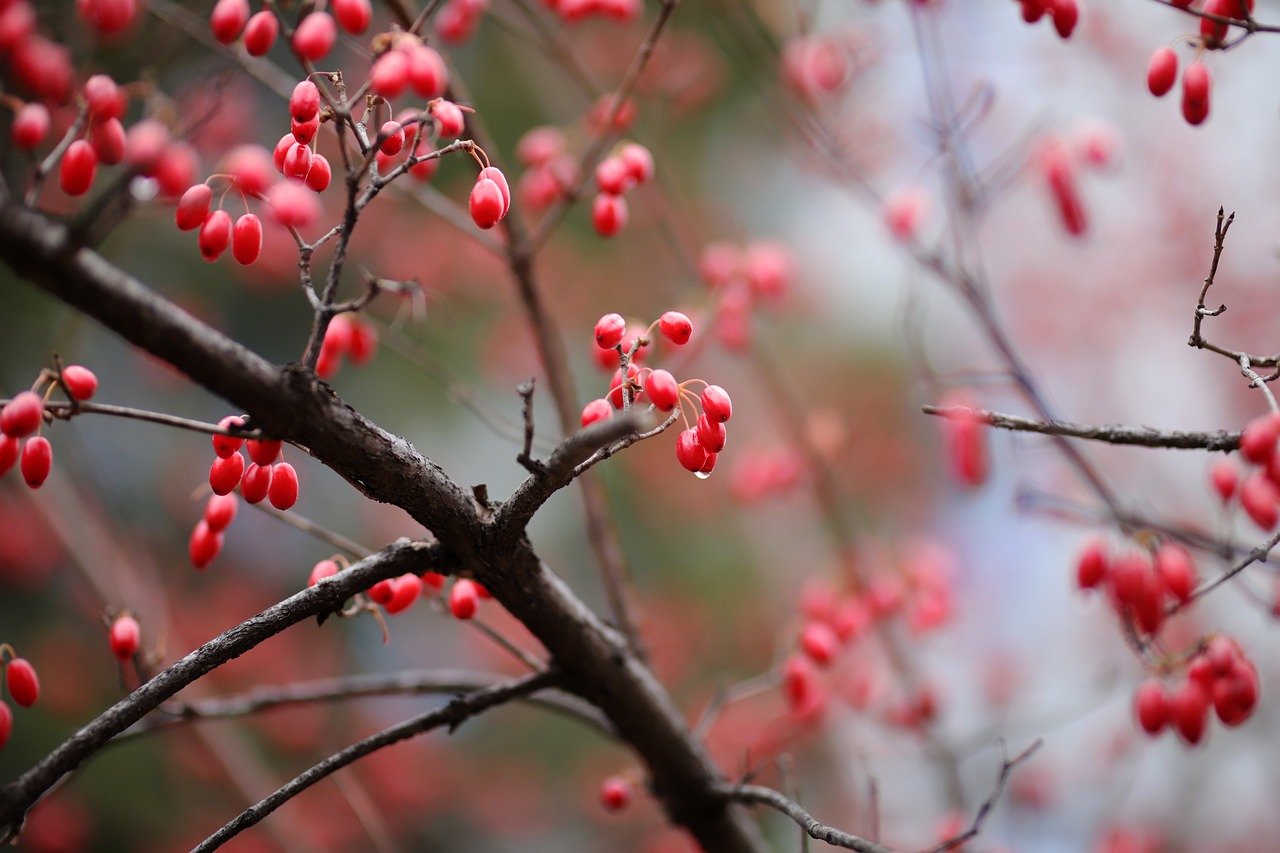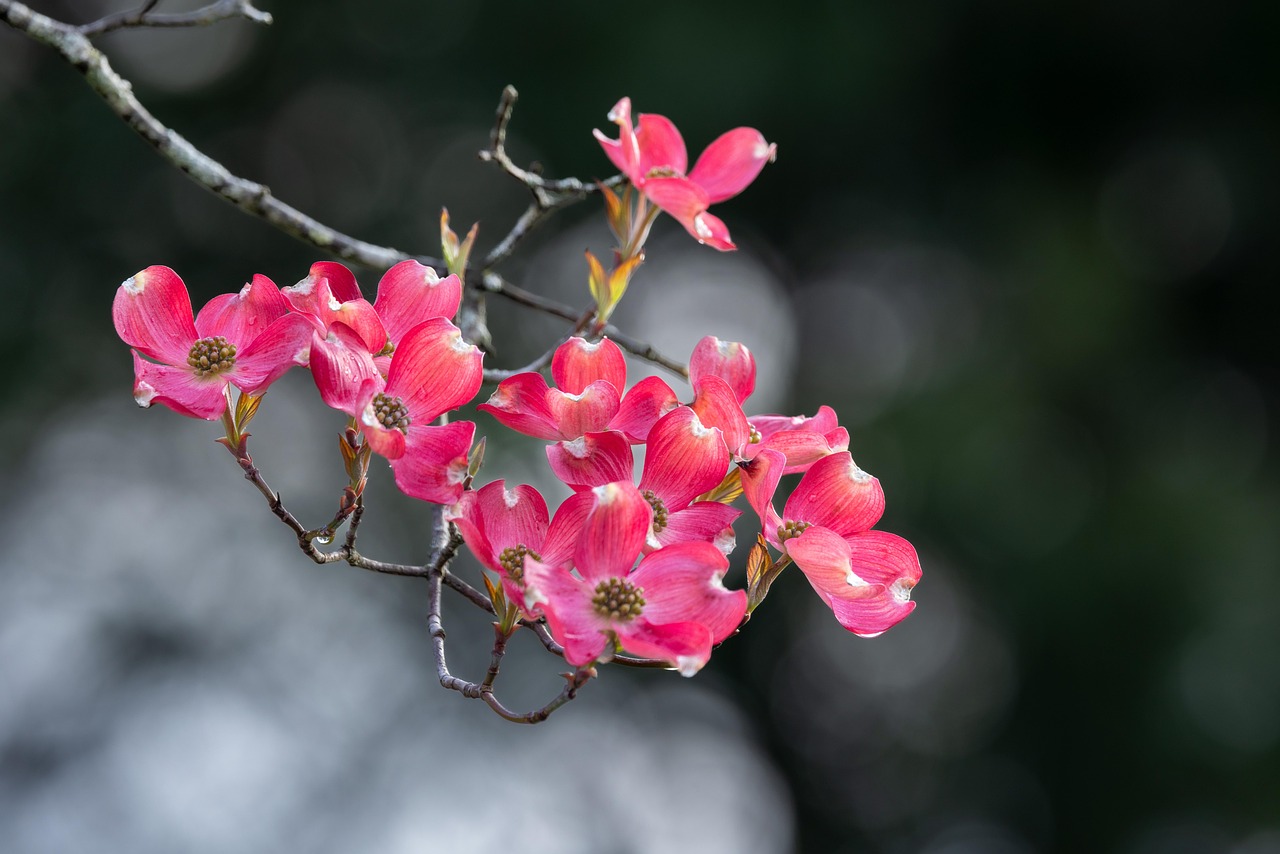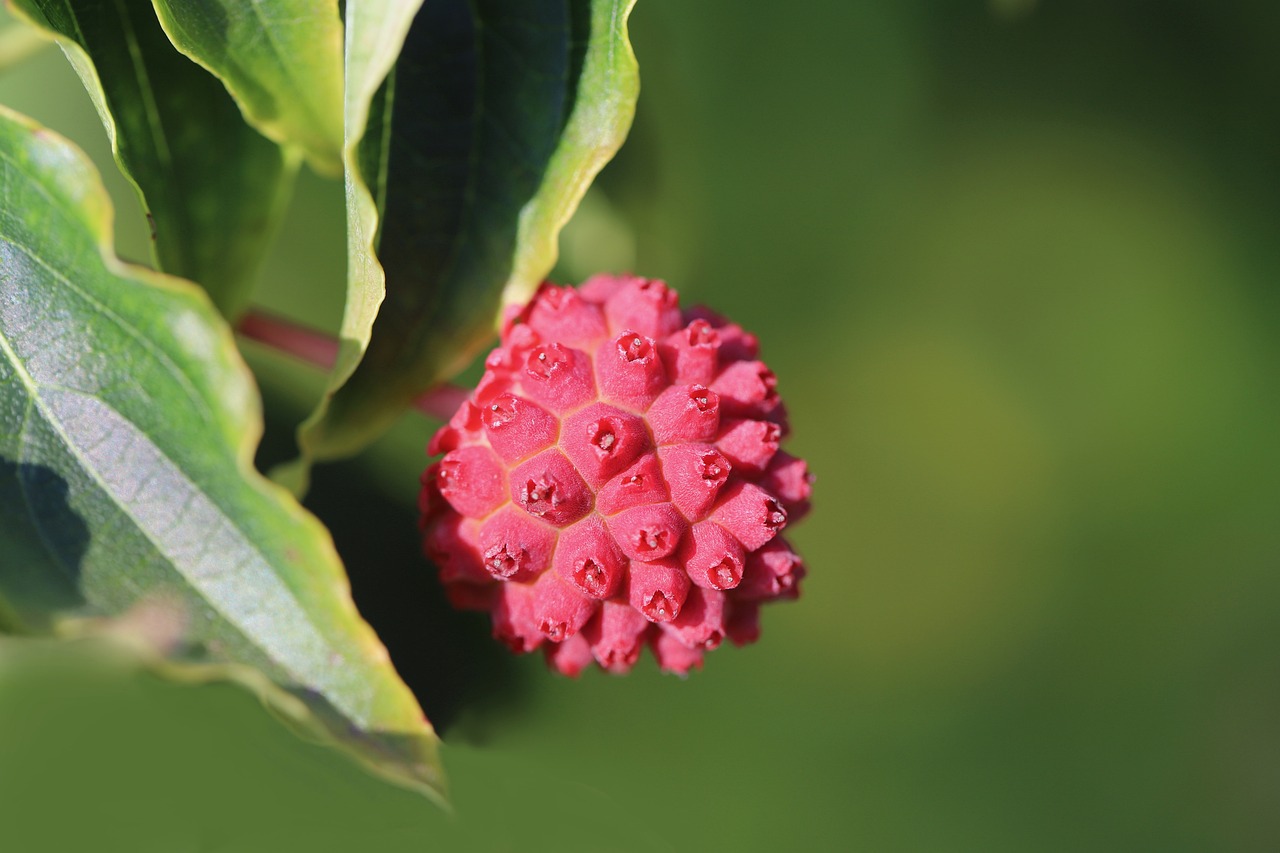The White Dogwood tree typically grows at a moderate rate of about 1 to 2 feet per year, making it suitable for understory gardens where slower growth is often preferred for aesthetic balance and ecological harmony.
The White Dogwood, known scientifically as Cornus florida, is a native tree species in the eastern United States. It is beloved for its stunning springtime blossoms, vibrant fall foliage, and distinctive branching structure. As an understory tree, it thrives beneath taller canopy trees, making it an ideal choice for woodland gardens and shaded landscapes. Its moderate growth rate allows it to fit harmoniously into these environments without overwhelming them.

Understanding the growth rate of the White Dogwood is essential for gardeners and landscapers. This knowledge assists in planning garden layouts, selecting companion plants, and ensuring that the tree receives adequate light and nutrients. In addition, knowing its growth habits can help in maintaining a balanced ecosystem in your garden.
Growth Rate Overview
The growth rate of any tree can be influenced by several factors including soil quality, sunlight, water availability, and competition from other plants. The White Dogwood is no exception. Here are some key factors that affect its growth rate:
- Soil Composition: The White Dogwood prefers well-drained, slightly acidic soils. Rich organic matter can promote faster growth.
- Sunlight: While it can tolerate partial shade, optimal growth occurs in areas with dappled sunlight. Too much shade can hinder its development.
- Watering: Regular watering during dry spells is crucial. However, overwatering can lead to root rot.
- Fertilization: A balanced fertilizer can support healthy growth, particularly in nutrient-poor soils.
- Competition: Nearby plants can compete for resources. Proper spacing is vital for the White Dogwood to thrive.
The White Dogwood’s growth pattern generally follows a predictable timeline. Young trees often exhibit rapid growth during their initial years before tapering off as they mature. Here is a general breakdown of its growth stages:

| Age (Years) | Average Height (Feet) | Growth Rate (Feet per Year) |
|---|---|---|
| 1 | 2 – 3 | 1 – 2 |
| 5 | 8 – 10 | 1 – 1.5 |
| 10 | 15 – 20 | 0.5 – 1 |
| 20 | 20 – 30 | 0.5 – 1 |
As shown in the table, the most significant height increases occur in the early years of growth. After reaching around 10 years of age, the rate of growth slows down considerably. This gradual change in growth rate is typical for many tree species and should be considered when planning your garden layout.
The adaptability of White Dogwoods contributes to their popularity among gardeners. They can thrive in various conditions but prefer environments that mimic their native habitat. When planted in groups, they create a stunning display of blooms and foliage that enhances the beauty of any understory garden.
Caring for a White Dogwood involves regular maintenance practices such as pruning, mulching, and monitoring for pests or diseases. These actions can help maintain its health and promote optimal growth over time.

In summary, understanding the growth rate of the White Dogwood is crucial for anyone looking to incorporate this beautiful tree into their understory garden. By considering its needs and growth stages, gardeners can create a thriving landscape that showcases the natural beauty of this iconic species.
Optimal Conditions for Growth
To achieve the best growth rate for White Dogwood trees, it is essential to provide optimal conditions. This includes selecting the right location and preparing the soil appropriately. The following factors are crucial for promoting healthy growth:
- Light Requirements: White Dogwoods thrive in partial shade to full sun. Ideally, they should receive filtered sunlight, especially during the hottest parts of the day.
- Soil Quality: Well-draining soil that is rich in organic matter is vital. Adding compost can improve soil structure and fertility.
- Moisture Levels: Consistent moisture is important without waterlogging. Regular watering during dry spells will support growth.
- Mulching: Applying a layer of mulch around the base of the tree helps retain moisture, suppress weeds, and regulate soil temperature.
Soil Preparation Techniques
Preparing the soil before planting is crucial for the White Dogwood’s success. Here are some effective soil preparation techniques:
- Testing Soil pH: The ideal pH for White Dogwoods is between 5.0 and 6.5. Testing kits are available at garden centers.
- Amending Soil: If necessary, amend the soil with sulfur or lime to adjust pH levels. Incorporate organic matter, such as compost or well-rotted manure, to enhance nutrient content.
- Tilling: Loosen the soil to a depth of about 12 inches to improve aeration and drainage. This will allow roots to establish more easily.
- Creating a Planting Hole: Dig a hole that is twice as wide and just as deep as the root ball. This encourages lateral root growth.
Companion Planting with White Dogwood
Companion planting can enhance the health and aesthetic appeal of your garden. White Dogwoods can coexist with various plants that complement their growth and provide beneficial interactions. Some suitable companion plants include:

- Ferns: Their delicate foliage harmonizes with the White Dogwood’s structure and provides a lush ground cover.
- Rhododendrons: These share similar soil and light requirements, creating a beautiful flowering display in spring.
- Blueberries: These shrubs thrive in acidic soils and can benefit from the shade provided by the dogwood, while also attracting pollinators.
- Wildflowers: Native wildflowers can attract beneficial insects and pollinators, enhancing the overall ecosystem.
Pest and Disease Management
Maintaining the health of your White Dogwood is essential for its growth and longevity. Here are some common pests and diseases to watch for:
| Pest/Disease | Description | Management Strategies |
|---|---|---|
| Dogwood Anthracnose | A fungal disease causing leaf spots and blight. | Improve air circulation by pruning, avoid overhead watering, and apply fungicides as needed. |
| Scale Insects | Tiny pests that suck sap from leaves and stems. | Use insecticidal soap or neem oil to control infestations. |
| Cankers | Sunken areas on bark due to fungal infections. | Prune affected branches and apply fungicides if necessary. |
Regular inspection of your White Dogwood will help you catch any issues early. Prompt action can prevent minor problems from escalating into significant threats.
Seasonal Care for White Dogwood Trees
Caring for your White Dogwood varies with the seasons. Understanding these seasonal needs will help ensure robust growth:
- Spring: Monitor for pests and diseases as new growth emerges. Fertilize with a balanced fertilizer if needed.
- Summer: Ensure adequate watering during dry spells. Mulch to retain moisture and suppress weeds.
- Fall: Rake fallen leaves to prevent disease buildup. Consider applying a slow-release fertilizer to support root development.
- winter: Protect young trees from harsh winter winds using burlap wraps or screens if needed.
The seasonal care of White Dogwoods not only supports their growth but also enhances their resilience against environmental stresses. By adhering to these practices, gardeners can enjoy the beauty of these magnificent trees in their understory gardens for many years. With proper care, White Dogwoods can thrive, creating a picturesque landscape filled with stunning blooms and vibrant foliage.
Environmental Factors Affecting Growth
When cultivating White Dogwood trees, several environmental factors significantly influence their growth rate and overall health. Understanding these elements can help gardeners create a conducive environment for these beautiful trees.
Climate Considerations
The White Dogwood thrives in temperate climates, which typically experience a range of seasonal changes. Here are key climate factors to consider:
- Temperature: White Dogwoods prefer moderate temperatures, ideally between 60°F and 75°F during the growing season. They can tolerate colder winters but are sensitive to extreme heat.
- Humidity: These trees benefit from a humid environment. High humidity levels help prevent water loss through transpiration, particularly during the hot summer months.
- Precipitation: Adequate rainfall is essential for proper growth. Regions receiving 40 to 50 inches of annual rainfall are ideal.
Soil Type and Structure
The type and structure of soil play a crucial role in the growth of White Dogwood trees. Here are the most important soil characteristics:
- Drainage: Well-drained soil is essential. Poor drainage can lead to root rot and other health issues.
- Texture: Sandy loam or loamy soils are preferred, as they provide good aeration and drainage while retaining necessary moisture.
- Nutrient Content: Soils rich in organic matter support vigorous growth. Conducting a soil test can help determine nutrient levels and guide amendments.
Propagation Methods for White Dogwood
Understanding how to propagate White Dogwood trees can help gardeners establish new plants. There are several methods for propagation, each with its own advantages:
Seed Propagation
Growing White Dogwoods from seeds is a common method, although it requires patience due to the lengthy germination period. Here are the steps involved:
- Seed Collection: Gather seeds from mature fruits in late summer or early fall when they are ripe.
- Stratification: To mimic natural conditions, stratify seeds by placing them in a moist medium in the refrigerator for about 90 days.
- Sowing Seeds: After stratification, sow seeds in well-draining soil in early spring.
- Watering: Keep the soil consistently moist but not soggy. Germination may take several weeks to months.
Cutting Propagation
Cuttages are another effective way to propagate White Dogwoods. This method is generally quicker than seed propagation:
- Time of Year: Take cuttings in late spring or early summer when the plant is actively growing.
- Selecting Cuttings: Choose healthy, semi-hardwood cuttings that are approximately 4 to 6 inches long, ensuring they have several nodes.
- Rooting Hormone: Dip the cut end in rooting hormone to encourage root development.
- Planting Cuttings: Place the cuttings in a mixture of potting soil and sand. Keep them in a humid environment until roots develop.
Pests and Diseases: Prevention and Management
White Dogwood trees are susceptible to certain pests and diseases. Being proactive in prevention can help maintain their health:
Common Pests
- Spider Mites: These tiny pests can cause leaf discoloration. Regularly inspect leaves and apply miticides if necessary.
- Leafcutter Bees: While generally not harmful, they can create holes in leaves. They do not require specific management as they are beneficial pollinators.
- Aphids: These sap-sucking insects can weaken the tree. Introduce ladybugs or use insecticidal soap to control infestations.
Disease Prevention
White Dogwoods can face various diseases that affect their growth and appearance. Here are some common diseases and preventive measures:
| Disease | Description | Prevention Strategies |
|---|---|---|
| Powdery Mildew | A fungal disease causing white powdery spots on leaves. | Ensure good air circulation and avoid overhead watering to minimize humidity. |
| Crown Gall | Bacterial infection resulting in galls or growths on roots and stems. | Avoid injuring the plant during maintenance, and remove affected areas promptly. |
| Root Rot | A condition caused by overwatering or poor drainage leading to wilting and decay. | Plant in well-drained soil and monitor watering practices closely. |
Being vigilant about monitoring your White Dogwood for pests and diseases will help ensure a healthy growing environment. Implementing these preventative measures can lead to a vibrant landscape filled with thriving White Dogwood trees, enhancing the beauty of understory gardens. Proper care and attention will yield significant rewards in aesthetics and biodiversity.
Additional Benefits of White Dogwood Trees
Beyond their beauty and moderate growth rate, White Dogwood trees offer several ecological benefits that contribute positively to understory gardens. These advantages enhance the overall health of garden ecosystems and make these trees valuable additions to any landscape design.
Wildlife Habitat
White Dogwoods provide essential habitat and food for various wildlife species. Here are some key points about their role in supporting biodiversity:
- Pollinator Attraction: The flowers of the White Dogwood attract a range of pollinators, including bees and butterflies, which are crucial for plant reproduction.
- Bird Food Source: The berries produced by the tree are a food source for birds during late summer and fall. Species such as robins and cedar waxwings enjoy these berries.
- Insect Habitat: The tree’s structure can provide shelter for beneficial insects, which help maintain healthy garden ecosystems.
Soil Improvement
The presence of White Dogwood trees can also enhance soil quality. Here are some ways in which they contribute:
- Organic Matter Contribution: Fallen leaves and flowers decompose, enriching the soil with organic matter and nutrients.
- Root Structure: The root system helps prevent soil erosion and maintains soil stability.
- Nitrogen Fixation: While not a nitrogen-fixing species itself, the presence of White Dogwoods can support a mixed planting approach with nitrogen-fixing plants, further enhancing soil fertility.
Designing Understory Gardens with White Dogwoods
When incorporating White Dogwoods into understory gardens, careful planning is essential for maximizing their aesthetic and ecological benefits. Here are some design considerations:
Layering and Plant Composition
Creating layers in the garden can enhance visual interest and support various plant species. Consider the following:
- Tall Canopy Trees: Plant White Dogwoods beneath taller trees, creating a tiered effect that mimics natural woodland settings.
- Mid-Level Shrubs: Add flowering shrubs such as azaleas or rhododendrons to provide color contrast and additional habitat.
- Ground Cover Plants: Incorporate low-growing plants like ferns or hostas to fill in space and suppress weeds.
Seasonal Interest
To ensure year-round visual appeal, consider the seasonal characteristics of all plants in the garden:
- Spring: Enjoy the beautiful blooms of White Dogwoods alongside other early bloomers like dog violets and spring ephemerals.
- Summer: The lush foliage provides cool shade while colorful wildflowers or annuals can add vibrant patches throughout the garden.
- Fall: The stunning fall color of White Dogwood leaves creates a striking display, complemented by the autumn hues from other deciduous plants.
- winter: Even in winter, the tree’s structure can provide interest. Consider adding evergreen plants to maintain greenery during the colder months.
Final Thoughts
The White Dogwood tree is a remarkable choice for understory gardens, offering both aesthetic beauty and ecological benefits. Understanding its growth rate, optimal conditions, propagation methods, and seasonal care allows gardeners to create thriving landscapes that flourish year after year. By thoughtfully incorporating this tree into garden designs, you can enhance biodiversity, attract wildlife, and improve soil health.
As you embark on your journey with White Dogwoods, remember that patience and care will yield rewarding results. The moderate growth rate of these trees allows them to fit naturally into their environment, making them ideal candidates for those seeking to enrich their gardens with native flora. Embrace the challenges and joys of nurturing these trees, and you will be rewarded with a stunning display of blooms and a harmonious ecosystem that benefits both plants and wildlife alike.
Ultimately, by prioritizing the needs of White Dogwoods and providing the right conditions for growth, you contribute to a sustainable gardening approach that celebrates nature’s beauty while fostering a rich habitat for generations to come.
